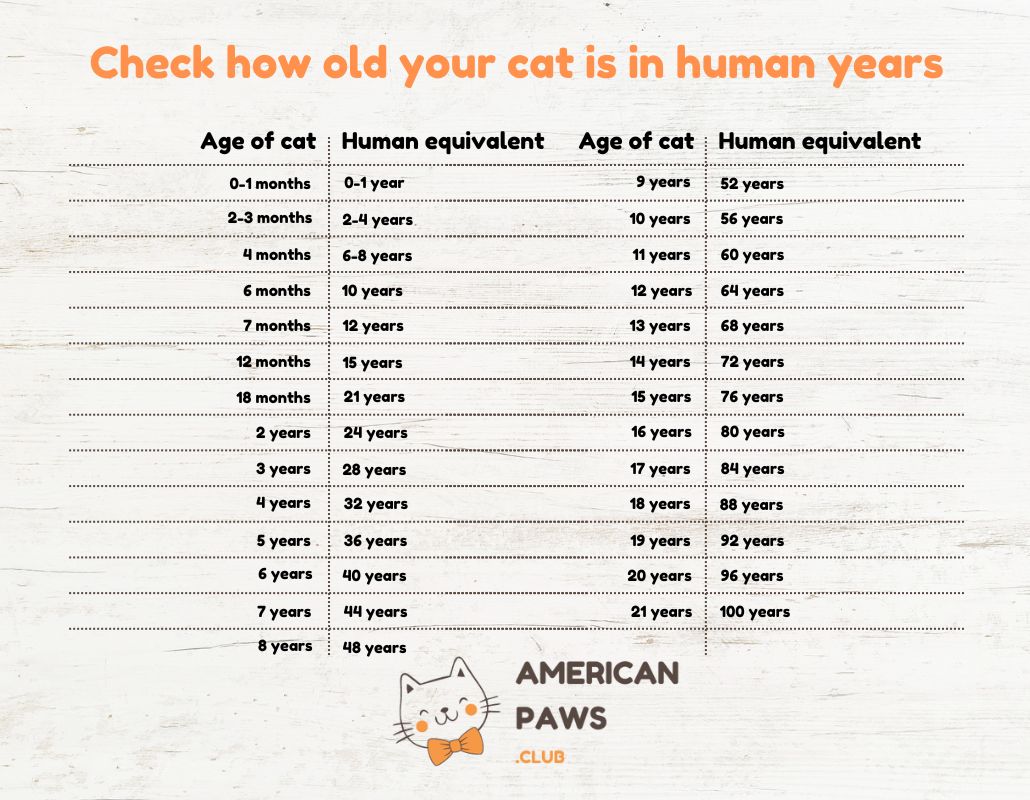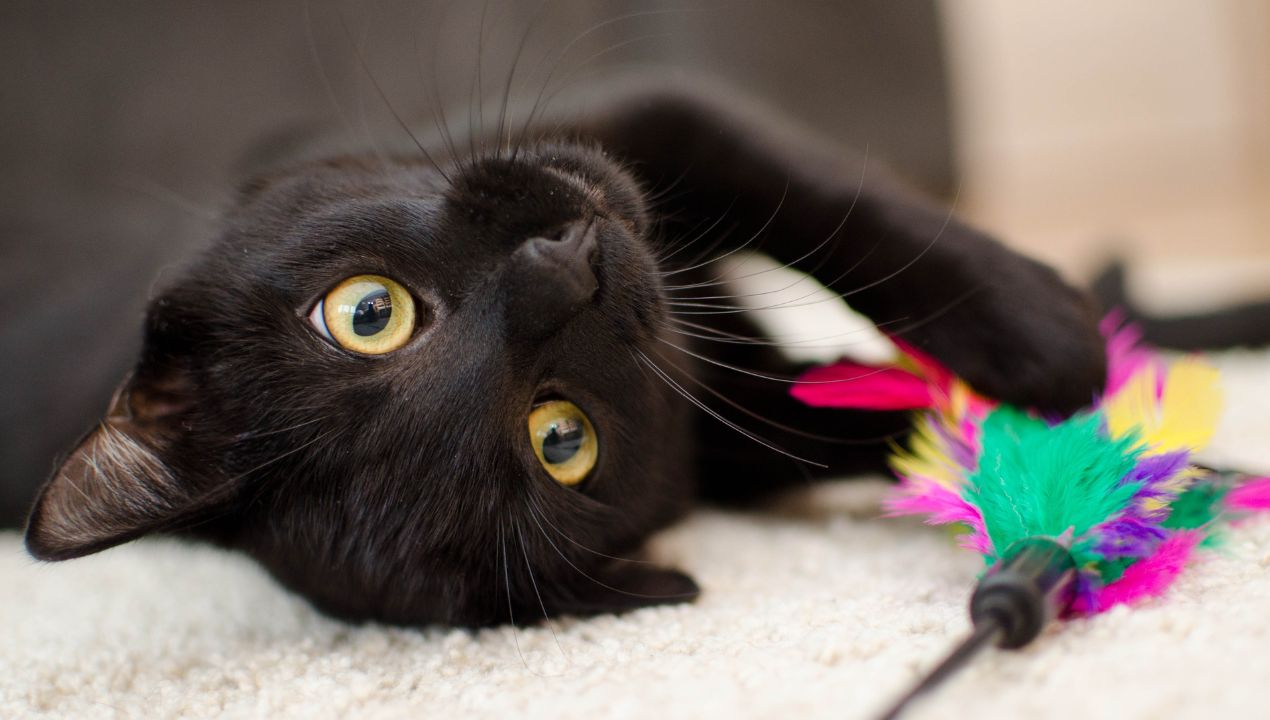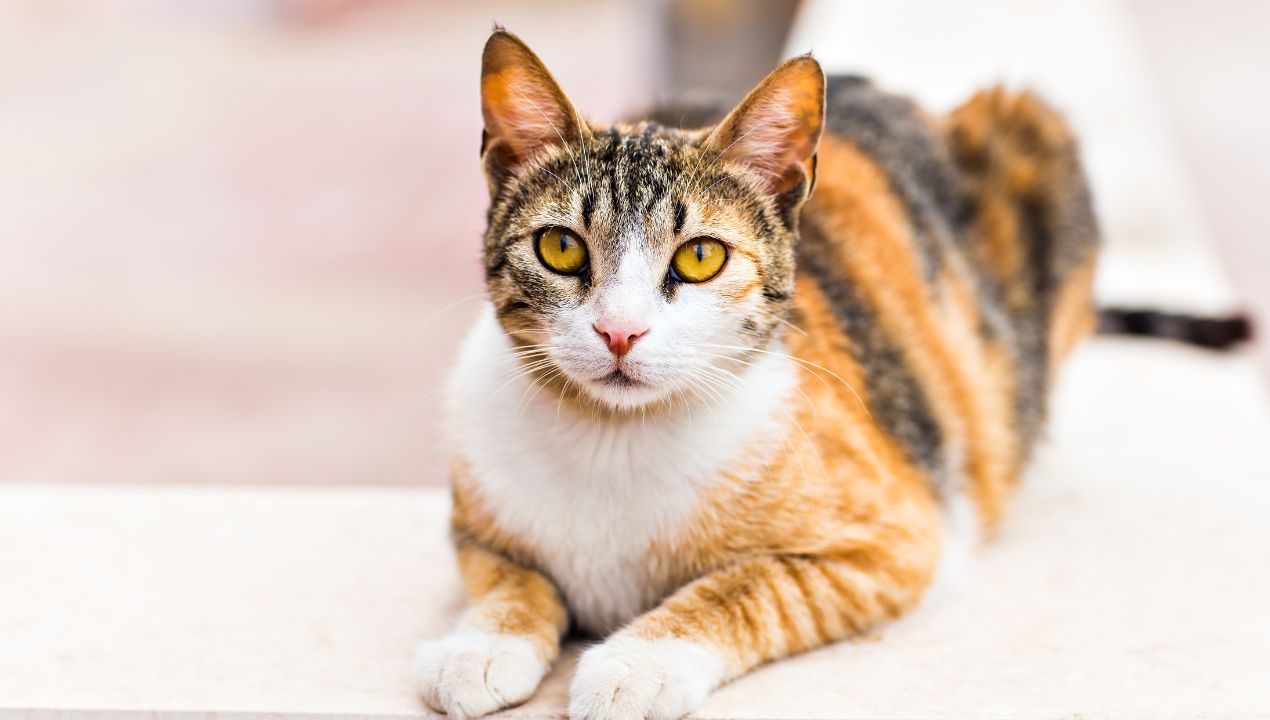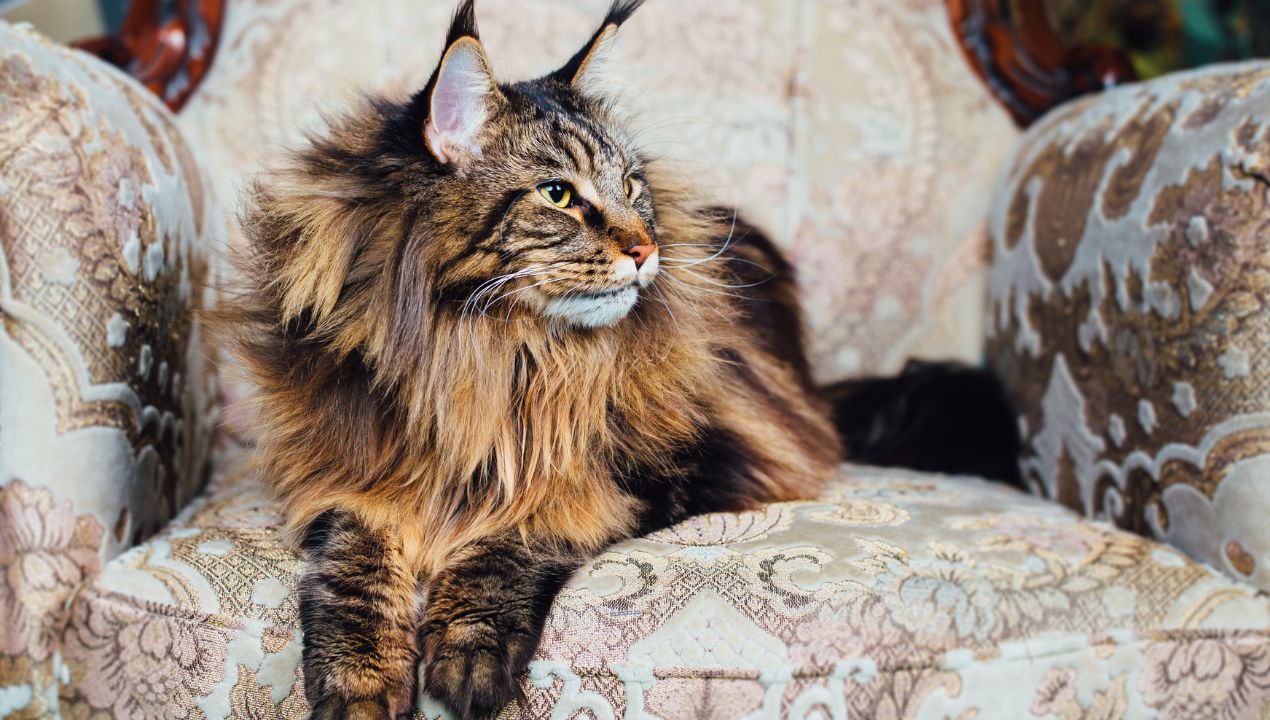Cats can sneak into our hearts and take up permanent residence. Their playful pounces, comforting purrs, and curious glances make it impossible to imagine life without them. But as you watch your cat chase a sunbeam or curl up for the hundredth nap of the day, a question might cross your mind: How long will this precious companionship last?
The lifespan of a cat isn’t set in stone. It can vary wildly based on breed, lifestyle, and care. Thankfully, there’s a lot you can do to ensure your feline lives a long and vibrant life. From genetics to daily habits, let’s uncover what influences your cat’s longevity and how to make every moment count.
Quick Article Links
- Average Lifespan of Cats
- How Cat Years Compare to Human Years
- Life Stages of Cats
- Factors Affecting a Cat’s Lifespan
- Lifespan by Cat Type
- Health Issues That Affect Cat Lifetime
- Tips to Help Your Cat Live a Longer, Healthier Life
- Myths About Cat Life Expectancy
- Signs Your Cat Is Aging
- Final Thoughts
Average Lifespan of Cats
When it comes to how long cats live, the numbers might surprise you. On average, most indoor cats enjoy a life expectancy of 12 to 18 years, and with top-notch care, some can even reach their early 20s!
In fact, the record for the oldest cat goes to Creme Puff from Austin, Texas, USA, who lived an astonishing 38 years from 1967 to 2005.
On the other hand, outdoor cats face a different reality. Their average lifespan typically ranges from 5 to 10 years. The challenges of life outside — like predators, traffic, and exposure to diseases — significantly lower their odds of a long life.
Every cat story begins with a kitten. Check out our kittens for sale, and let your adventure start with a bundle of whiskers and purrs.
How Cat Years Compare to Human Years
Cats might seem to age in mysterious ways, but their timeline is surprisingly swift. That tiny fluffball who’s knocking things off your desk? By their first birthday, they’re already a rebellious teenager — think 15 human years. By the time they hit two, they’re a full-fledged young adult at about 24 human years. After that, every cat year tacks on around four human years.

So your 10-year-old feline is living the midlife vibes of a 56-year-old! This rapid early aging means your cat races through life’s milestones while you’re still figuring out their favorite treat. Remembering this helps you appreciate how quickly your mischievous kitten becomes a wise, whiskered sage.
Life Stages of Cats
Just like humans, cats go through several distinct life stages, each with its own quirks, needs, and milestones. Knowing these stages helps you provide the right care at the right time.
1. Kitten (0 to 6 months)
This is the stage of rapid growth, boundless energy, and relentless curiosity. Kittens learn about the world, develop social skills, and require proper nutrition, vaccinations, and plenty of playtime to build a healthy foundation.
2. Junior (7 months to 2 years)
At this stage, your cat is still maturing. They may look like an adult, but mentally and physically, they’re still developing. It’s the perfect time to reinforce good habits and ensure regular vet visits to monitor growth.
3. Prime (3 to 6 years)
These are the peak years of your cat’s life. They’re full-grown, confident, and typically at their healthiest. Keeping up with a balanced diet, exercise, and preventive healthcare is key to maintaining their prime condition.
4. Mature (7 to 10 years)
Cats begin to show subtle signs of aging during this stage. You might notice a slight decrease in activity or changes in weight. Regular check-ups have become even more important in catching any potential health issues early.
5. Senior (11 to 14 years)
Senior cats often slow down and may need adjustments to their routine. Their diet, exercise, and environment might need tweaking to accommodate aging joints or fading senses. Pay close attention to their behavior for any signs of discomfort.
6. Geriatric (15+ years)
At this point, your cat is truly in their golden years. Extra care and patience go a long way in making them comfortable. Regular vet visits, pain management, and a calm, supportive environment can make a big difference.
Factors Affecting a Cat’s Lifespan
A cat’s lifespan isn’t determined by luck alone. Several key factors play a major role in how long your furry companion will be around. Here are the most significant influences on feline longevity:
- Genetics and Breed
Some breeds are naturally hardier than others. Mixed-breed cats often benefit from greater genetic diversity, which can reduce the likelihood of inherited diseases. On the other hand, purebred cats like Persians or Bengals may be prone to specific health conditions that could impact their lifespan. Knowing your cat’s breed-related risks helps you stay proactive with their care. - Indoor vs. Outdoor Living
Where your cat spends its time has a huge impact on its lifespan. Indoor cats are shielded from dangers like traffic, predators, and infectious diseases, giving them a clear advantage in longevity. In contrast, outdoor cats face daily risks that often shorten their lives. If your cat loves the outdoors, consider creating a secure enclosure or “catio” to offer the best of both worlds. - Diet and Nutrition
Quality nutrition is a cornerstone of a long life. A balanced diet tailored to your cat’s age and health needs supports everything from a healthy weight to a strong immune system. Avoid overfeeding, as obesity can lead to diabetes, joint issues, and heart problems. Fresh water and a diet rich in protein, vitamins, and minerals go a long way. - Healthcare and Preventive Vet Visits
Regular veterinary care is essential for catching potential health problems early. Annual check-ups, vaccinations, and dental care can prevent issues before they become serious. For older cats, semi-annual vet visits help manage age-related conditions and keep them comfortable.

- Exercise and Mental Stimulation
Just like humans, cats need regular physical and mental activity to stay healthy. Play sessions, interactive toys, and climbing structures keep their bodies fit and their minds sharp. A bored cat can become overweight or develop behavioral issues, so mix up their routines to keep things fresh and engaging. - Spaying and Neutering
Sterilized cats generally live longer due to reduced risks of certain cancers and infections. Spaying or neutering also minimizes behaviors that could lead to accidents or injuries, such as roaming or fighting.
Genetics plays a significant role, so if you’re adopting a cat, inquire about the health history of the cat’s parents and grandparents, as this can provide insight into potential hereditary issues. How lifespan varies across different breeds, the average lifespan of popular cat breeds may be interesting.
Lifespan by Cat Type
A cat’s lifespan largely depends on their lifestyle and environment. Let’s break down the typical life expectancy for different types of cats.
Indoor Cats
Living in a safe, controlled environment allows indoor cats to thrive for 12 to 18 years, with some even reaching their early 20s. Protected from dangers like traffic and predators, these cats benefit from regular meals, vet care, and plenty of mental stimulation.
Outdoor Cats

Outdoor cats face daily risks like cars, predators, and disease, shortening their average lifespan to 5 to 10 years. While they enjoy freedom and natural behavior, regular vet visits and parasite prevention are crucial for their health.
Indoor-Outdoor Cats
These cats balance the safety of home with outdoor adventures and typically live 10 to 14 years. Supervised outdoor time or a secure “catio” helps them enjoy exploration while staying safe.
Feral Cats
Feral cats, with little to no human contact, have the shortest lifespan — just 2 to 5 years. Survival is tough due to limited food, injuries, and disease. Trap-neuter-return (TNR) programs can improve their quality of life and control overpopulation.
Health Issues That Affect Cat Lifetime
Certain health problems can significantly shorten a cat’s life if left unchecked.
Kidney Disease is common in older cats, leading to gradual organ failure. Regular vet check-ups and hydration help manage it.
Diabetes often results from obesity and poor diet. Maintaining a healthy weight and balanced nutrition can prevent this condition.
Cancer can appear in various forms, especially in older cats. Early detection through routine vet visits increases the chances of successful treatment.
Dental Disease may seem minor but can lead to infections affecting the heart, liver, and kidneys. Regular dental care is key.
Parasites and Infections like fleas, worms, and viruses can weaken your cat’s immune system. Preventive treatments and vaccinations protect against these threats.
Tips to Help Your Cat Live a Longer, Healthier Life
Want to give your cat the best shot at a long and happy life? Here are some key tips to keep in mind:
Provide a Balanced Diet – Feed your cat high-quality food that suits their age and health needs. Avoid overfeeding to prevent obesity.
Schedule Regular Vet Visits – Annual check-ups (or semi-annual for senior cats) to catch health issues early and keep vaccinations up to date.

“The older your pet gets, the more often I would recommend a physical exam and blood work. Consider blood work every 12 months for adults and every 6 months for senior cats.” – Veterinarian Mykhailo Ozmenchuk.
Encourage Exercise and Play – Daily play sessions keep your cat physically fit and mentally sharp. Scratching posts, toys, and climbing trees help maintain activity.
Keep Up with Dental Care – Regular brushing and dental check-ups prevent gum disease and related health problems.
Maintain a Safe Environment – If your cat goes outside, consider supervised time or a secure catio to minimize risks.
Watch for Changes – Sudden changes in behavior, eating, or weight could signal a health issue. Early intervention makes a difference.
A little attention to these areas ensures your cat enjoys their nine lives to the fullest!
Myths About Cat Life Expectancy
When it comes to how long cats live, a few myths can lead to misunderstandings. Let’s clear up some common misconceptions.
Myth 1: One Cat Year Equals Seven Human Years
This simple formula doesn’t reflect a cat’s actual aging process. Cats mature quickly in their first two years, reaching the equivalent of 24 human years. After that, each additional year equals about four human years.
Myth 2: Cats Have Nine Lives
Though it’s a fun saying, cats only have one life. Their agility and quick reflexes may help them avoid danger, but they’re not invincible. Proper care and attention are what truly help them live longer.
Myth 3: Indoor Cats Don’t Need Vet Visits
Even if a cat stays indoors, they still need regular vet check-ups. Indoor cats can develop illnesses like dental disease, obesity, or kidney problems, which can go unnoticed without professional care.
Myth 4: All Purebred Cats Live Longer
Some purebred cats are prone to genetic health conditions that can shorten their lifespan. Mixed-breed cats often benefit from stronger genetic diversity, making them less susceptible to certain inherited diseases.

Signs Your Cat Is Aging
As cats get older, they experience changes that can affect their behavior, health, and appearance. You might notice your cat sleeping more, moving a bit slower, or showing less interest in play. Weight fluctuations, either gaining or losing, are also common signs of aging. Vision and hearing may begin to fade, leading to clumsier movements or less responsiveness to sounds.
Dental issues, such as bad breath or difficulty eating, become more likely in senior years. Keep an eye out for changes in grooming habits or litter box use — they can signal joint pain or underlying medical issues.
Regular vet visits are crucial for catching age-related problems early, and small adjustments, like softer bedding, easy-access litter boxes, and gentle play, can keep your aging cat comfortable and happy through their golden years.
Final Thoughts
Your cat may not have nine lives, but they can make one life feel like pure magic. From their kitten antics to their wise, old-cat stares, every stage is a new chapter in your shared adventure.
Give them love, attention, and a touch of patience, and they’ll reward you with years of playful sneak attacks, impromptu dance moves at 3 a.m., and that signature “I-own-this-house” attitude that somehow makes everything feel just right. After all, time with a cat isn’t measured in years but in memories.

FAQs
Do male or female cats live longer?
On average, female cats tend to live slightly longer than males — usually by about 1 to 2 years.
Does neutering or spaying affect cats’ lifespan?
Yes. Spayed and neutered cats often live longer due to a lower risk of infections, cancers, and roaming-related injuries.
Can stress shorten a cat’s life?
Absolutely. Chronic stress can lead to health issues like heart disease and weakened immunity. A calm environment promotes a longer life.
Does the size of a cat affect how long they live?
Yes. Smaller cats generally outlive larger breeds, similar to how smaller dog breeds often live longer than larger ones.
How can I tell if my cat is aging faster than normal?
Signs like excessive weight loss, chronic lethargy, and dental issues might indicate accelerated aging. Consult your vet if concerned.
Are specific diets linked to longer cat lifespans?
Balanced, protein-rich diets with minimal fillers support longevity. Avoid excessive treats and low-quality food.
References:
- CATS BELONG INDOORS: Exploring the benefits of keeping cats within the home environment.
- Uncontrolled Outdoor Access for Cats: An Assessment of Risks and Benefits: This paper detailed the risks and benefits associated with cats’ outdoor access.
- Uncovering Secrets to Feline Longevity: Insights into factors that contribute to the longevity of cats.
- Longevity and mortality in cats: A single institution necropsy study of 3108 cases: Comprehensive research on the factors affecting cat longevity based on necropsy results.






0 Comments